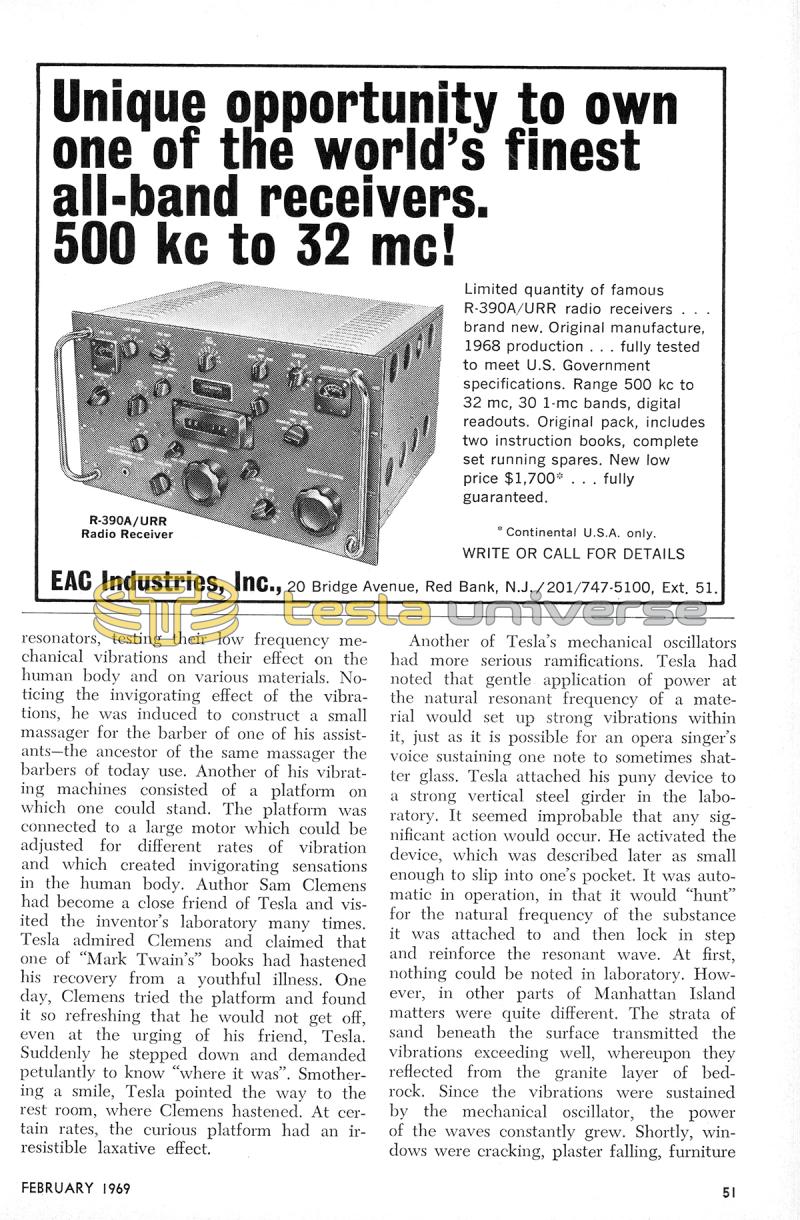
Nikola Tesla Articles
resonators, testing their low frequency mechanical vibrations and their effect on the human body and on various materials. Noticing the invigorating effect of the vibrations, he was induced to construct a small massager for the barber of one of his assistants-the ancestor of the same massager the barbers of today use. Another of his vibrating machines consisted of a platform on which one could stand. The platform was connected to a large motor which could be adjusted for different rates of vibration and which created invigorating sensations in the human body. Author Sam Clemens had become a close friend of Tesla and visited the inventor's laboratory many times. Tesla admired Clemens and claimed that one of "Mark Twain's" books had hastened his recovery from a youthful illness. One day, Clemens tried the platform and found it so refreshing that he would not get off, even at the urging of his friend, Tesla. Suddenly he stepped down and demanded petulantly to know "where it was". Smothering a smile, Tesla pointed the way to the rest room, where Clemens hastened. At certain rates, the curious platform had an irresistible laxative effect.
Another of Tesla's mechanical oscillators had more serious ramifications. Tesla had noted that gentle application of power at the natural resonant frequency of a material would set up strong vibrations within it, just as it is possible for an opera singer's voice sustaining one note to sometimes shatter glass. Tesla attached his puny device to a strong vertical steel girder in the laboratory. It seemed improbable that any significant action would occur. He activated the device, which was described later as small enough to slip into one's pocket. It was automatic in operation, in that it would "hunt" for the natural frequency of the substance it was attached to and then lock in step and reinforce the resonant wave. At first, nothing could be noted in laboratory. However, in other parts of Manhattan Island matters were quite different. The strata of sand beneath the surface transmitted the vibrations exceeding well, whereupon they reflected from the granite layer of bedrock. Since the vibrations were sustained by the mechanical oscillator, the power of the waves constantly grew. Shortly, windows were cracking, plaster falling, furniture
